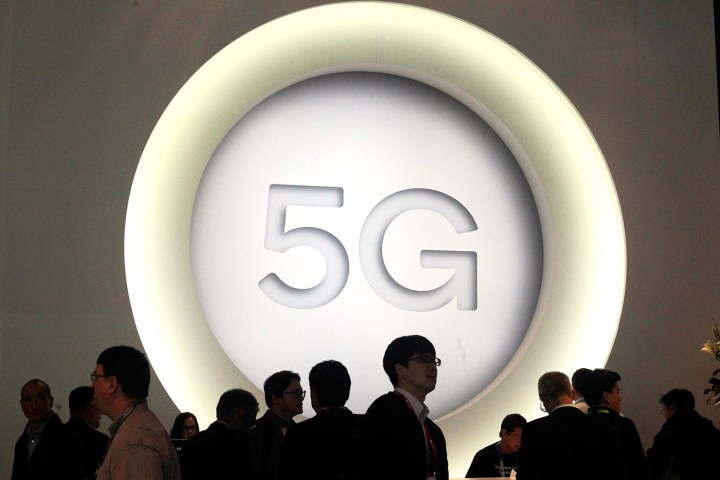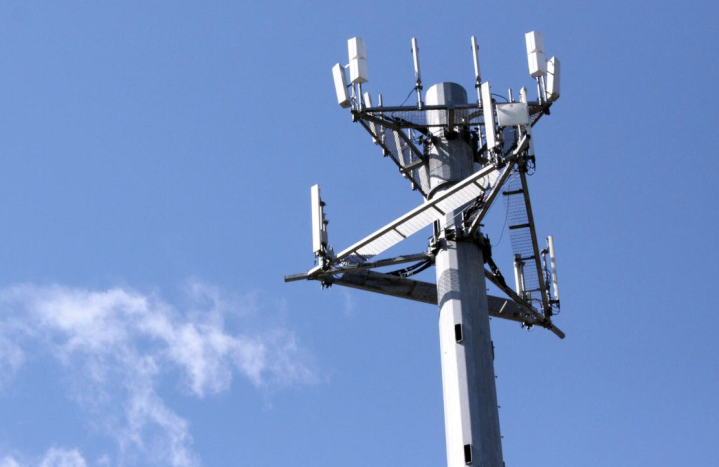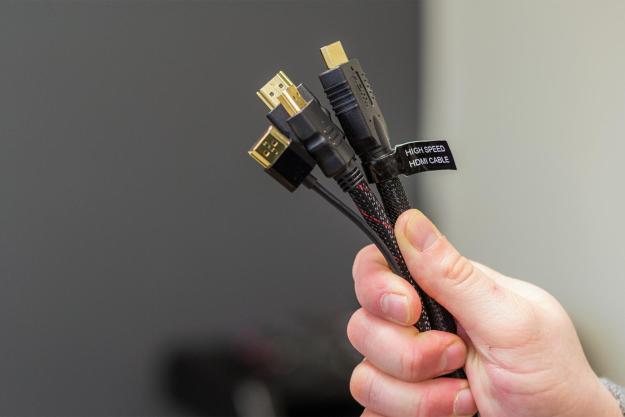While often talked about in reference to mobile devices, the latest 5G standard extends beyond that. It can apply to your everyday home internet connection, too — through something called fixed wireless, or FWA (Fixed Wireless Access). While the rollout of FWA was slowed a bit in 2020, things are starting to pick up speed, which means fixed wireless options may be available in your area.
5G promises far faster speeds for mobile phones, and reduces the latency or delay inherent in most networks. That means communication will be instantaneous, VR will be as smooth as butter, and all sorts of crazy new concepts will be made possible. And with fixed wireless, all that technology comes right into your home. Best of all, you can get it today.
What is fixed wireless 5G?
So how does fixed wireless differ from traditional wireless internet? Well, for starters, in more traditional internet setups, a cable goes all the way to a house. The homeowner buys a router they can hook up, plugs it in, and updates as they wish.
With fixed wireless, there are no cables required. Instead, a “fixed” antenna is installed on the house, similar to how a satellite dish might be installed. This antenna then creates a wireless connection with a nearby wireless tower, which can connect to many antennas at the same time.
When the fixed antenna receives the signal, it can send the connection down a short cable and into the house, where it can link up to a router or other device as needed. Inside the house, once 5G devices are out in the world, you may not notice anything is different at all.
Keep in mind, FWA can be installed and used separately from 5G, 5G is just a better fit for the fixed wireless access technology. This will become important down below, since many providers are starting with fixed wireless 4G, and are slowly upgrading (or planning upgrades) to 5G.
How does 5G service work?

Like other wireless connections, 5G does operate on the radio spectrum, but in a very different way from past wireless internet options. It can run on the low-band, mid-band, or high-band spectrum, and different carriers are already busy experimenting with different bands using their own technology.
As of now, most of the current interest is high-band spectrum 5G using millimeter wave (mmWave) technology. The result is a combination of beamforming and direct wireless connections with mobile devices. If you’ve read anything about MIMO — a technology that lets advanced wireless routers communicate with several devices at once — it’s helpful to think of 5G as a massively up-scaled version of a similar technology, able to deliver wireless connections to a whole geographic area.
You can learn much more about 5G applications with our guide here, but for now, let’s talk about the main benefits of switching to this new wireless standard:
Reduced connectivity costs: Fixed line installation for high-speed internet is a big pain. In many urban areas, fixed-line infrastructure is so expensive to install and maintain that it’s not even worth it. Rural areas face similar problems due to such large installation spaces. 5G solves these problems by greatly decreasing the physical infrastructure needed to provide reliable internet. This should make reliable internet services available for many areas that previously had no access to it.
Faster speeds: Experiments with 5G wireless have yielded very high speeds, even up to 1,000Mbps.
Fewer latency issues: 5G has very, very low latency compared to other wireless connections. That’s convenient for consumers, but it also means that 5G can be used in many important professional tasks where a dependable connection is essential.
Lower energy use: 5G takes relatively little energy to connect and transmit data compared to current online connection options.
Expected speeds
We mentioned speeds of up to 1,000Mbps, but those are target speeds in highly controlled environments with technology that’s not entirely out on the market yet.
True fixed wireless 5G, as it’s arriving, will have speeds that are comparable to current average internet speeds — around 30Mbps to 300Mbps. That, of course, depends on the location and service being offered. Verizon, for example, promises speeds of around 300Mbps for its cellular service, and says some locations could see peak speeds of nearly 1Gb. In the future, as the 5G rollout continues, you can expect speeds to start increasing toward that 1Gb marker and perhaps beyond. Lab speeds have reached 4.5Gbps, although it’s difficult to know how long this will take to achieve.
Clayton Harris turned on the first fixed wireless 5G network in the country when Verizon installed one in his house in late 2018. He claimed to see speeds between 500 and 600Mbps — with the network topping out at 1.8Gbps. Typical speeds are between 1.1Gbps and 1.2Gbps, he said at the time.
5G installation
So, if the final step to 5G is wireless, what does the installation look like? Obviously it’s “fixed,” but does that mean you’ll be seeing new wireless towers go up in your area?
Maybe not. It may be difficult to notice true 5G installations at all. All the broadcasting station requires is a simple antenna. In more urban areas, these will be easily installed on existing cell towers, buildings, and similar locations.
In suburban and rural areas, more towers may need to be built. 5G’s broadcast radius is currently rather small, and existing towers in these areas may not have enough overlap for the service. Companies like T-Mobile are working to potentially improve the radius with different radio spectrums, so this won’t be as pressing an issue in the future. Verizon, meanwhile, is setting up “small cell” infrastructure with tiny nodes that can be placed anywhere convenient, like a tree, lamppost, or on a current cell tower, although it may need to get permission from local authorities first.
At home, a receiver unit is also required. This will be a simple device, much like the current “Customer Premise Equipment” that fixed-line connections currently require, such as gateways or cable boxes. Setup is expected to be easy enough to allow for self-installation in most cases. For Clayton Harris in Houston, installation of Verizon’s 5G service involved a small antenna outside of his house connected via a wire to a router inside. That router then broadcasts a superfast Wi-Fi signal.
Pricing and availability of fixed wireless 5G
Who’s got it? How does it work? Where can you get it? And most important, what’s it going to cost? Here’s a look at the major carriers and how their 5G fixed wireless installations look.
Verizon
Verizon’s Home 5G service is available in more than a dozen cities, including Atlanta, Chicago, Detroit, Dallas, Houston, Phoenix, Los Angeles, Denver, Miami, and Minneapolis. Customers can anticipate speeds of 300 Mbps and peak speeds of 1 Gbps, the company claims. Go to verizonwireless.com/5g/home to find out if 5G Home is in your area and sign up.
For Verizon Wireless customers, the service costs $50 per month with a wireless phone plan, or $70 per month without a wireless phone plan. The service comes with one free month of YouTube TV, and a Wi-Fi 6 router, which includes a 10W speaker with Bluetooth playback and Amazon Alexa built-in. There are no equipment or installation charges for this service, at least at this stage.
Marketing language also gets tricky here, as not all of Verizon’s many FWA installations offer true 5G, whatever they claim: The company is using a proprietary 5GTF standard to simulate “true” 5G as closely as possible until the equipment is ready for the upgrade to the real 3GPP 5G standard. There will be no charges for this upgrade, and it should be an easy process, as the current equipment is prepared for the standard upgrade. However, Verizon is hesitant to differentiate between 4G and 5G installations, and sees the future as a mix of both.
The company is also participating in much larger projects to fit venues with FWA technology that can eventually be used for 5G: Examples include the 5G NFL Super Stadium, the Smithsonian, and the MET.
T-Mobile
Similarly, T-Mobile has big plans underway. The company submitted plans to the FCC in late 2018, and predicted it would have fixed wireless 5G in more than 1.9 million homes by 2021. In March, CEO John Leger announced even bigger plans for 5G at home, writing that “we will offer a meaningful new option to millions of Americans in the form of New T-Mobile Home Internet. New T-Mobile’s business plan is to have 9.5 million customers for our in-home broadband service by 2024.”
The service will deliver 100+ Mbps speeds for wireless broadband at just $50 per month, he wrote. That said, an FAQ on the company’s site describes the service as 50Mbps. An invite-only pilot program is currently ongoing in unspecified “rural and underserved” areas of the country. Light Reading, a news site dedicated to networking tech, spoke with a customer in Memphis and others, who had mixed reviews of the limited initial service.
As with Verizon, all of T-Mobile’s FWA installations started with default 4G connections. T-Mobile is only planning to start upgrading these connections to 5G in 2021, with no strict dates for when customers can expect it.
AT&T
The country’s second-largest carrier is busy installing 4G FWA with a focus on reaching rural communities, but has no current plans to roll out 5G compatibility, seeing this is as a project years in the making. The company focused on reaching 1.1 million FWA locations in 2020.
The current FWA 4G option, a service AT&T describes as “rural internet without a satellite,” offering a taste of the intended market. The service is “eligible for rural households and small businesses via an outdoor antenna and indoor Wi-Fi Gateway.” Currently, the service costs $60 per month or $120 per month with DirecTV. AT&T is only promised speeds of at 10Mbps for this service, and a $100 installation fee is required.
Sprint
2020 saw T-Mobile and Sprinter complete their merger, and all of Sprint’s resources are now going to T-Mobile’s current plans.
US Cellular
A dark horse in the race, US Cellular is making aggressive plans around 5G, but does not appear to have any plans for FWA 5G. Instead, the company is planning to roll out more traditional 5G services in parts of Iowa and Wisconsin. The company has a coverage map to check, but it’s…not exactly helpful.
Editors' Recommendations
- What is SATA? Here’s everything you need to know about it
- What is RAM? Here’s everything you need to know
- MacBook Pro battery replacement: everything you need to know
- What is Wi-Fi 7: Everything you need to know about 802.11be
- What is a meme? Here’s everything you need to know








